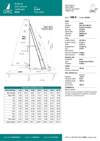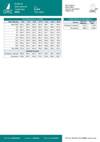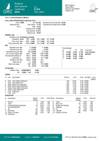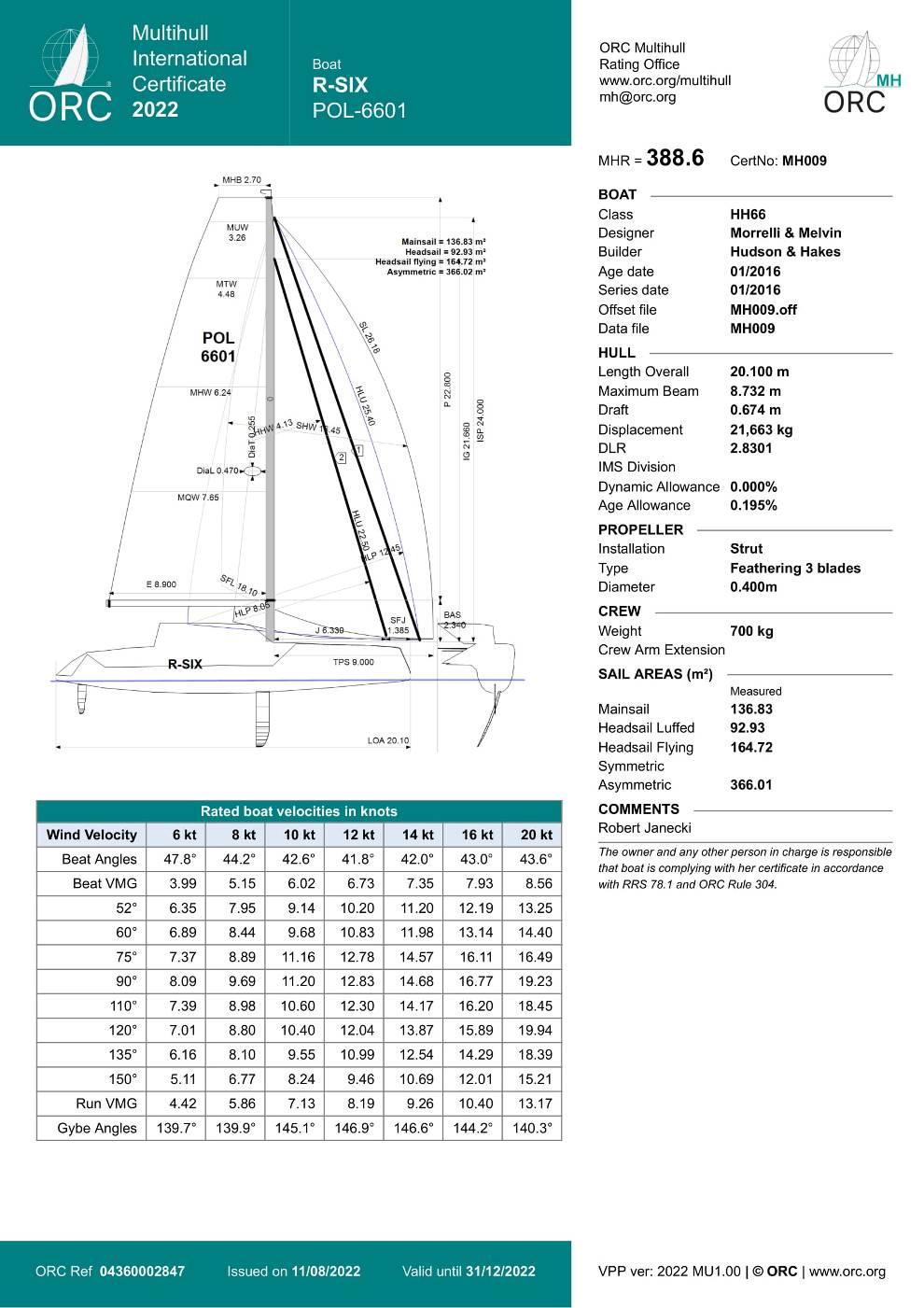ORC Multihull Certificate
The second page is presenting the scoring options.




The third page is showing a detailed list of measurements of the hull and appendages, propeller, rig, flotation, and the measurement inventory, while the fourth page is reserved for measurements within the sails inventory.
Place the cursor over different parts of the certificate page for a brief explanation. More details are given in the measurement and scoring sections, while complete definitions can be found in the appropriate rules documents.
